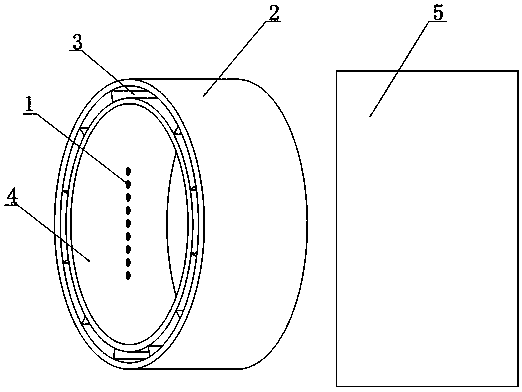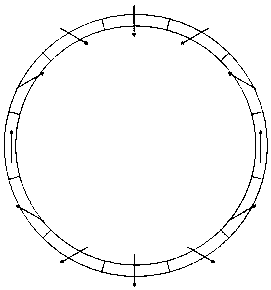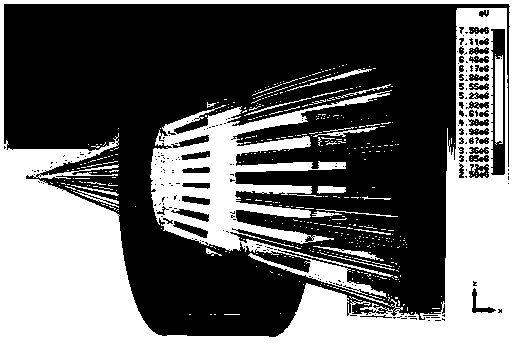A positron-electron magnetic spectrometer with angular resolution
An angle-resolved, positive and negative technology, applied in the field of positive and negative electron magnetic spectrometers, can solve problems such as low measurement accuracy, and achieve the effects of high measurement accuracy, convenient use and multiple measurement directions
- Summary
- Abstract
- Description
- Claims
- Application Information
AI Technical Summary
Problems solved by technology
Method used
Image
Examples
Embodiment
[0037] Such as figure 1 As shown, the present invention provides a magnetic spectrometer, which includes a collimation hole array 1 , a cylindrical magnet device and a positron-electron recording medium 5 . The collimation hole array 1 is used to pass through the positive and negative electrons generated from the target point. In this embodiment, the collimation hole array 1 is composed of nine vertically arranged collimation holes, and is close to the cylindrical shape. On one side of the magnet device (entrance), the center coordinates of the nine collimation holes are: 0mm, ±10.5 mm, ±21.2 mm, ±32.2 mm, ±43.7 mm, and the corresponding divergence angles are 0, ±5.625°, ±11.25°, ±16.875°, ±22.5°, the diameter of each collimation hole is 4mm. After the positrons and electrons pass through the collimation hole array 1, only the positrons and electrons in certain directions enter the cylindrical magnet device.
[0038] The cylindrical magnet device is used to generate a magnet...
PUM
 Login to View More
Login to View More Abstract
Description
Claims
Application Information
 Login to View More
Login to View More - R&D
- Intellectual Property
- Life Sciences
- Materials
- Tech Scout
- Unparalleled Data Quality
- Higher Quality Content
- 60% Fewer Hallucinations
Browse by: Latest US Patents, China's latest patents, Technical Efficacy Thesaurus, Application Domain, Technology Topic, Popular Technical Reports.
© 2025 PatSnap. All rights reserved.Legal|Privacy policy|Modern Slavery Act Transparency Statement|Sitemap|About US| Contact US: help@patsnap.com



